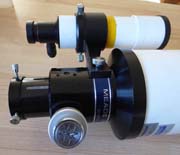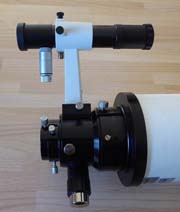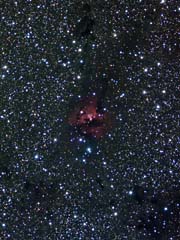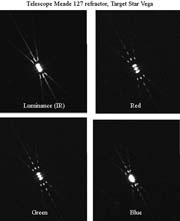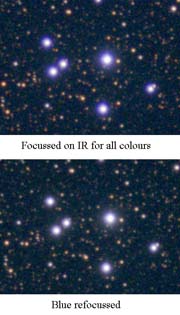|
Fortunately after a number of frustrating nights when it
clouded over too soon, the night of 1st June played fair
with 2 clear hours of Astronomical twilight, and I was able
to complete the data set for my colour trials.
And here is the result - crops from unbinned images of
NGC6633. Both images used the same Luminance, Red and Green
image sets, the only difference being the Blue, and both
combined colour sets were processed identically.
QSI with SXAO, Luminance 8 x 5 minutes, RGB and B
refocussed each 5 x 5 minutes, all unbinned.
Pretty conclusive and definitely worth the experiment, so
I'll always refocus Blue in the future. Easy with the
caliper mod. There is of course still a small halo effect in
the monochrome Luminance image due to the slightly unfocused
blue colour, but when the corrected colour image is applied
to the Luminance the halo is no longer coloured blue, so
much less obvious. There is another way of doing this -
dispense with the Luminance image altogether. But that would
mean much longer exposures with each colour filter to get
the same depth of data. Or of course spend £1000s on a
better quality large refractor!
The full sized image can be seen here.
Although this modification worked
quite well, my hankering for a larger and even better
refractor eventually won, hence the sale of the 127. I would
have loved a 6" refractor, but too heavy for my 'Star Party'
EQ6 mount.
|

